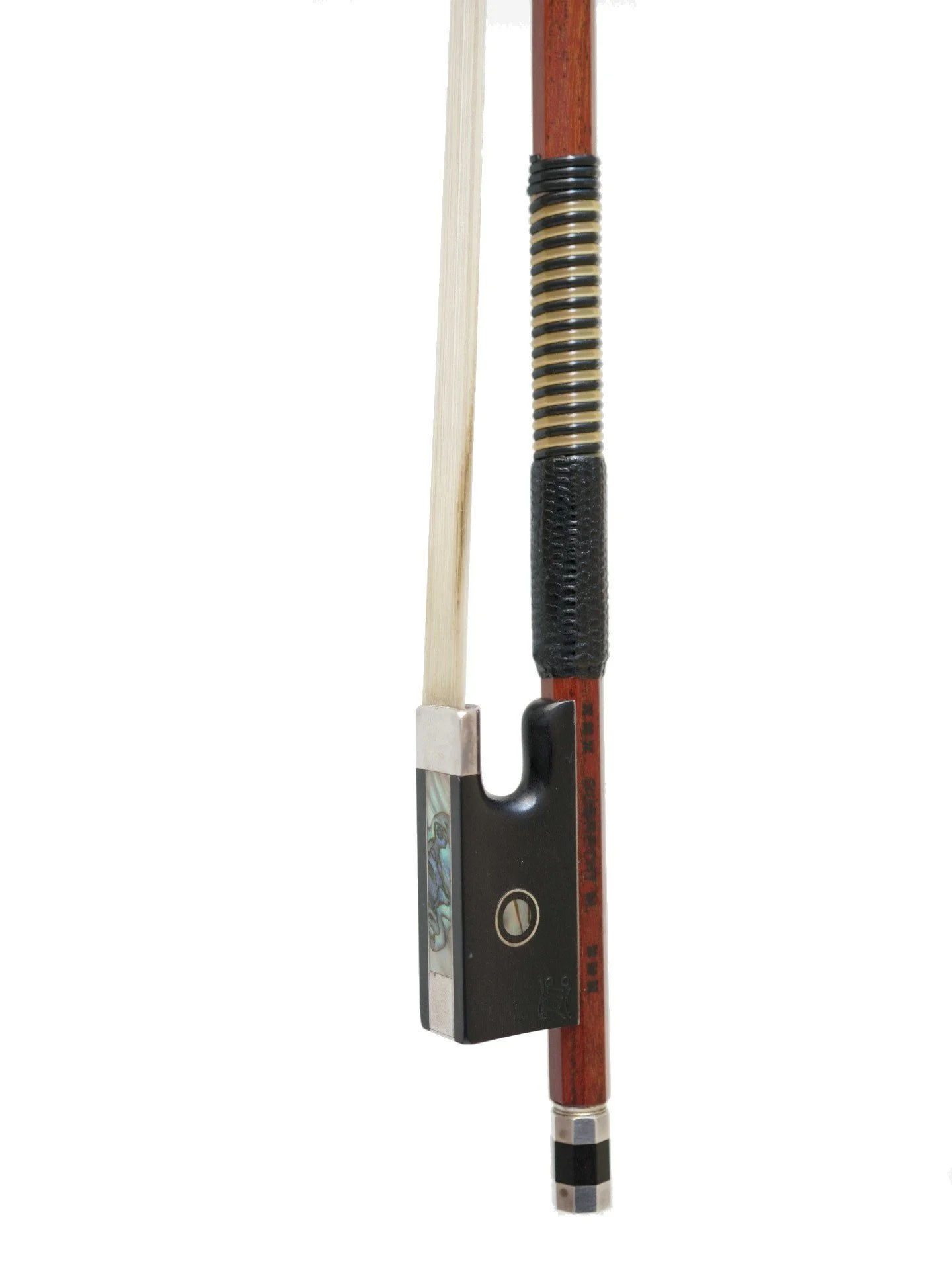Tips for buying your violinbow
Although the focus is often on the violin, the choice of bow is no less important. The bow not only influences the playing comfort and the possibility to use different bowing techniques, but it also is of major influence on the sound. There are many things to consider when choosing a bow. I've listed them here for you.
1. Material
Bows are generally made of brazil wood, pernambuco wood or carbon fiber. Brazilwood is a collective name for various tropical hardwood species (much of this wood comes from Brazil). These bows cost between 50 and 500 euros and are mostly used by beginner or intermediate violinists. The best bows are made from Pernambuco wood. It is heavy reddish wood that grows in Brazil and has the ideal properties in terms of strength, elasticity and flexibility. Pernambuco wood is becoming increasingly scarce and expensive, because the Brazilian government has imposed restrictions on exports from a sustainability point of view. Pernambuco bows start at 200 euros and if you want one from Tourte or Peccatte from the 19th century you will have to pay more than 100,000 euros. Completely hand-built bows start at around 1500 euros. Forte Violen sells very beautiful hand-built pernambuco bows from renowned master builders. Over the past 10 years, carbon fiber bows have become increasingly popular. They are an attractive alternative to pernambuco bows, because they are relatively affordable and approach the playing characteristics of Pernambuco bows.
2. Weight and balance
The weight of a bow is usually between 58 and 63 grams. However, how heavy the stick feels and how pleasant it plays also has to do with the center of gravity. For example, if you like a light stick, you will probably choose a violin bow with a lower center of gravity, closer to the frog.
3. Stiffnes
In general, stiff bows are more expensive and made of better quality Pernambuco wood. A stiff bow plays more directly and lends itself better to fast bow techniques. In addition, you can put more pressure so that you can make a more powerful and clearer tone. On the other hand, a bow that is too stiff can give a too rough and sharp sound. You can easily test the stiffness of a bow by holding it by the tip and slightly bending the bow horizontally. You quickly feel how much 'resistance' the bow offers.
4. Round or octagonal
The great French violin bowmakers actually only have round bows and these are still preferred by the basic bowmakers. There are a number of commercial producers where the octagonal version of the same bow is the more expensive of the two. The idea is that an octagonal stick is better. If two sticks are made from the same wood, the octagonal will be slightly stiffer, but there is also a greater chance that this is too sharp and one-dimensional. Choosing a round or octagonal bow, is an individual choice and has to do with personal preferences.
Finally, some practical tips:
try several bows and put away the ones you don't like. This makes it easier to make a selection that suits you. Then make a second selection and test one or two bows at home for a week.
the first impression is important; feel how the bow is in your hand and how it responds when you start playing
check whether the bow is completely straight, the slip fits well on the bow, the bow can be tensioned properly and the end screw turns easily
play different strokes with it, so that you get a complete picture of the bow's properties. Compare the bow with your own bow. This is often a good and trusted reference.
every bow plays differently on a different violin. Find a bow that matches your violin.
show the bow to your teacher or fellow violinists. Remember it will be your bow and not theirs. You must make the final decision!
You can also rent a bow before you buy it. All bows can also be rented from Forte Violen.



